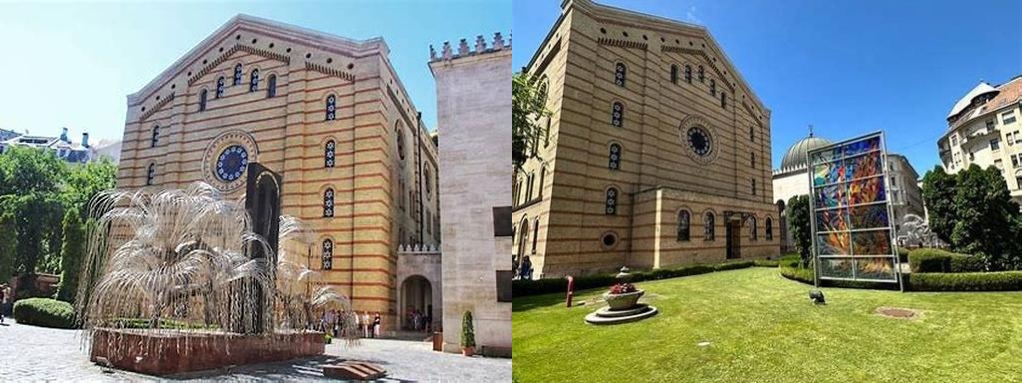
Budapest is well-known for its architectural grandeur and vibrant culture, but tucked amid the bustling cityscape lies a fascinating complex that awaits curious visitors: the Magyar Zsidó Múzeum és Levéltár (Hungarian Jewish Museum and Archives) alongside the noteworthy Heroes’ Memorial Temple in modern style. Here, past and present engage in silent conversation, revealing chapters of Jewish heritage, perseverance, and creativity in captivating detail.
The Hungarian Jewish Museum and Archives is not just another museum; it sits gracefully next to the symbolic Dohány Street Synagogue—Europe’s largest and the beating heart of the local Jewish community since the mid-1800s. The building seamlessly blends into the synagogue complex thanks to the vision of Lipót Baumhorn, an acclaimed architect who understood the nuances of sacred spaces. Opened in 1932, the museum was designed to complement its remarkable neighbor, both architecturally and spiritually. Inside, you’ll discover a world of ritual objects, art, and historical documents, preserved with care against the backdrop of generations who contributed to Hungary’s rich Jewish tapestry.
Wandering through the museum, the silver gleams from 18th-century Torah crowns, delicate Hanukkah lamps, and intricately decorated prayer books transport you into the very rhythms of everyday Jewish life in Hungary over the centuries. The museum does not shy away from difficult histories. Memorial items and poignant personal stories remind visitors of both the creative energy and the quiet resilience of a community no stranger to upheaval. In the archives, even the most reserved researcher can find themselves captivated by letters, photographs, and records charting triumph and tragedy. For many, it is the little things—a handwritten prayer, a faded photograph, a child’s drawing—that linger in the mind long after a visit.
Next door, the Heroes’ Memorial Temple provides a striking contrast both architecturally and spiritually. Erected in 1931 to honor Hungarian Jewish soldiers who perished in World War I, the building stands apart with its streamlined, modern style conceived by László Vágó. With its bold curves and light-filled interiors, it echoes the hope and dynamism of a new era, even as it functions as a space for reflection and remembrance. The temple serves the Jewish community to this day; when sunlight streams in through the windows during a service or a commemorative event, you may sense a gentle conversation between memory and modernity.
Both spaces are living witnesses to Budapest’s diverse storyline. Pause for a moment in the garden between the museum and the Heroes’ Temple—you’ll see testaments to endurance all around, including the evocative Raoul Wallenberg Memorial Park with its weeping willow sculpture acknowledging the tragedies of the Holocaust. A short walk around the block reveals how Jewish culture, architecture, gastronomy, and daily life now thrive again in District VII, the city’s energetic “Jewish Quarter.”
For anyone who wishes to understand more than the surface of Budapest, this complex offers resonance and richness. Whether you’re history-buff, art lover, or a traveler searching for meaning, the Magyar Zsidó Múzeum és Levéltár and the modernist Heroes’ Memorial Temple promise to reveal not just stories of the Jewish community, but the very pulse of a city that remembers and renews itself, each and every day.





